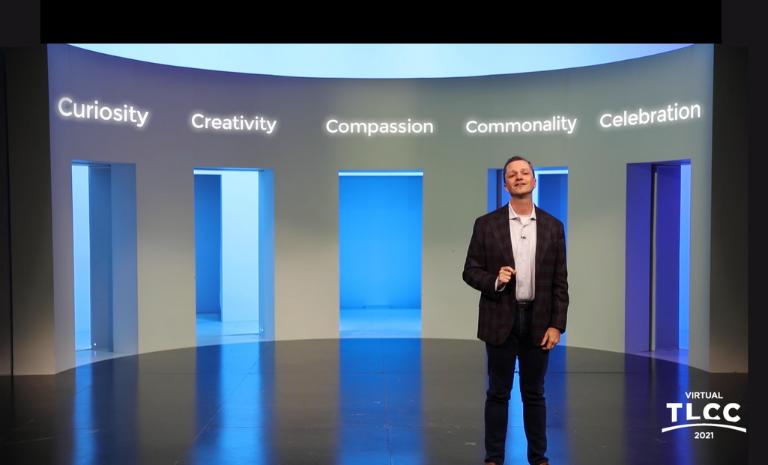Fundraising
Article
Insights & Innovation
b929810f-4b77-4eec-bbf7-9d057e43f4c9
5 min
https://edge.sitecorecloud.io/tessituraneab9a-tessiturane5642-staging-5396/media/Images/Stock-Photography/business-notebook-hand-laptop-768x465.png?h=465&iar=0&w=768
With Tessitura, the answers are right at your fingertips
Five questions to ask before your next donor meeting

Director, Onboarding, Tessitura Network
Five questions to ask before your next donor meeting
11/15/2021
5 min
Every donor visit is meaningful.
Whether you will be meeting with a prospect or long-time donor, in person or online, it’s essential to be prepared. Make sure you know salient details about your donor’s relationship with your organization upfront. It will not only build your confidence going into the meeting; it also shows that your organization knows the donor well and values their time.
I learned a lot about what makes a productive donor contact in my 15 years working in fundraising and customer relations. As I prepare for any significant interaction with a donor, I aim to answer five key questions about them before we meet:
- Who are they?
- When was their most recent significant contact?
- When are they coming next? When did they last attend?
- What are their interests?
- Do they have any open action items?
With Tessitura as my data partner, the answers are right at my fingertips. If you’re not using Tessitura, you’ll still be able to apply similar principles to your meeting research.
Being prepared will not only build your confidence going into the meeting; it also shows that your organization knows the donor well and values their time.
1. Who are they?
Start by exploring the donor’s key constituent details to understand more about them and their history with my organization. I review their contact details to see where they live. I like to click on the map link so I can visualize their geographical relationship to my facility.
It’s essential to look at their donation history on the Contributions tab. I review funds and designations to understand what projects and programming they’ve supported. I note the recency of their last donation based on contribution date and gauge their overall loyalty by fiscal years of the contributions’ campaigns.
A quick glance at the Relationships tab shows me where this person works and who they might know in my organization’s customer network. These insights help me make thoughtful connections or ask meaningful questions.
These insights help me make thoughtful connections or ask meaningful questions.
Finally, I make sure to review the donor’s constituencies. Constituencies offer a quick way to understand the roles a customer plays at my organization. I can review the abbreviated constituency codes on their record’s header or full information on the Constituencies screen. Either way, I can quickly understand whether they’re a board member, volunteer, member, subscriber, ticket buyer, or any combination of these.
In a pinch and need this information to go? Head right to the Constituent Profile report either in the application or in Tessitura on the Go. This report provides contact information, contributions, constituencies, relationships, ticket history, memberships, plans, and much more. I can select what specific constituent data I need for my purpose and either print it out or simply pull it up on my mobile phone as I head to my meeting.
2. When was their most recent significant contact?
Thoughtful donor stewardship requires that we remember what a donor has previously told us. Tessitura helps us coordinate that. Before I speak with a donor, I review the most recent conversations we’ve had with them. This is about both traffic control and respect. It would be unprofessional to reach out unilaterally to a donor immediately before or after they speak with a colleague. And I should never waste a donor’s time reacquiring important details I should already know. Every action I take should move their relationship forward.
Thoughtful donor stewardship requires that we remember what a donor has previously told us. Every action I take should move the relationship forward.
I pull up the Plans screen of the donor’s record in Tessitura and toggle to Step View. This shows me steps from their respective plans and lets me review steps by due date, completion date, and type. I can open any step right from this screen to review details of the interaction. I’ll examine the most recent actions taken and any upcoming steps that are due soon.
Back on the Plans screen, I review primary workers assigned to any active plans. If the donor is not assigned to my portfolio, I coordinate with any primary workers to make sure my actions will support their strategy for the donor.
3. When are they coming next? When did they last attend?
We fundraisers know the discomfort of cold contacting a donor prospect, especially one we do not know particularly well. To cut through the awkward, I arm myself with easy-to-navigate conversation starters. Anyone can discuss the weather, but why not use the moment to reinforce my organization’s mission?
That’s why I always look to see if the person has upcoming tickets and when they last purchased or visited. Knowing this prompts me to ask about their last experience or inspire enthusiasm for their upcoming visit. It also provides a perfect opportunity to arrange an in-person greeting. If they do not have any previous ticket history, I am still prepared: I have the perfect chance to ask why and invite them!
Anyone can discuss the weather, but why not use the moment to reinforce my organization’s mission?
I love that Tessitura keeps ticket history and attendance history right alongside giving information. I can go to the Ticket or Attendance History screens, but I typically leverage the simplicity of a flex header first. Tessitura includes standard flex header elements that can be activated on headers and assigned to specific groups of users in Security. I personally like to activate the Next Perf and Last Perf elements on a header, so that I can efficiently obtain this relevant purchase information in a pinch before or even during my conversation with a donor.
4. What are their interests?
As a fundraiser, it’s my job to connect donors with our organization’s programming to encourage their philanthropy. This requires that I highlight aspects of our work that speak to their interests. To achieve this, I need to know what they value before we connect. A few key elements help me quickly understand what motivates my donor.
First, their Interests screen shows me which specific programs or topics interest them and they’ve opted to receive information about. Next, I review the Philanthropy screen. When my colleagues and I learn which other organizations the donor supports, such as health care or education institutions, we make sure to record this here. We can then use this information to present them with funding opportunities that sit at the intersection of their broader interests and our own programming.
As a fundraiser, it’s my job to connect donors with our programming to encourage their philanthropy. To achieve this, I need to know what they value before we connect.
Ideally, I also have an integration with one of Tessitura’s three wealth screening partners. This lets me access ratings as well as valuable information about their personal philanthropic behaviors and giving capacity — directly in Tessitura.
Don’t forget the information you’ve already gleaned from previous steps. Seeing the funds and designations assigned to their historical contributions illuminates how they prefer to designate their funding. This lets me come prepared with details of related revenue needs or understand whether I can easily ask for unrestricted support. Their ticket and attendance history will show what types of events and program offerings they frequent.
5. Do they have any open action items?
I want to make the biggest impact in the short time I have the donor’s attention. This means that I need to know about any open action items I can address while we meet. I have already examined their open and upcoming plan steps, but there is more I may wish to consider.
To see if they have been invited to any upcoming receptions or galas, I review both the Activities and Events screens. If so and they haven’t responded, I will remind them how much we would value their attendance. If they have RSVPed, I can thank them, reconfirm their plan to attend, and ask for any last details we may need.
I want to make the biggest impact in the short time I have the donor’s attention. This means that I need to know about any open action items I can address while we meet.
The Customer Service Issues screen tells me if there are any general service items I may need to acknowledge. For example, perhaps they pay their donations on installments and their card has just expired. Maybe they called to complain about a recent experience in our facility. And how helpful am I to mention that my audience services colleague has been trying to reach them about their special seating request? I can put them directly in touch as soon as we are done!
Of course, I always have money on my mind, so I never forget to double-check their contribution history for open pledges. Better not ask for more without ensuring they have already paid last year’s pledge. If not, maybe I will get lucky, and they would be willing to bring their check to our meeting.
Now I’m ready to go!
With all this information in a single Tessitura record, I can answer these essential questions about a donor in moments. The information gives me confidence that I understand who my potential donor is. More importantly, I know the best next step to deepen their relationship with my organization.
It’s true that having this data requires proper data entry standards and diligence. A bit of ongoing dedication to data upfront saves everyone hours of time when it matters. Happy fundraising!
If you have questions about any of the features I’ve discussed, please feel free to ask us! And if you want to know more about how you can optimize these features to support your business goals, please don’t hesitate to reach out.
Top photo by Rupixen on Unsplash.
Topics
Fundraising

Ryan Sedgwick
Director, Onboarding
Tessitura Network

Why Arts & Culture is Essential Today
Arts & Culture
Healing the world requires five human traits: arts & culture delivers them all.

A contactless customer journey with a personal touch
Arts & Culture / Business Strategy / Technology / Ticketing & Admissions
How Georgia Aquarium creates a visitor-focused experience